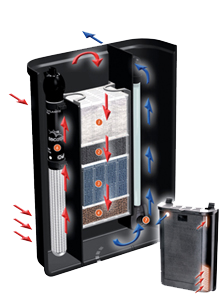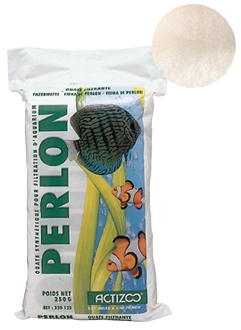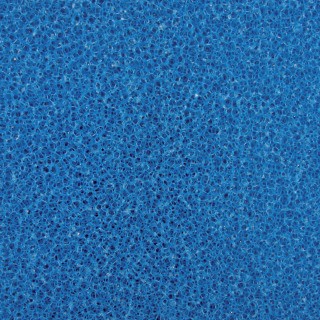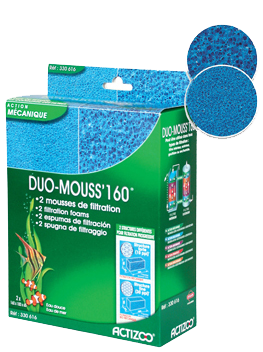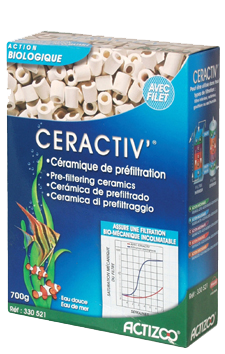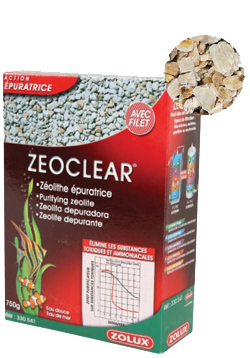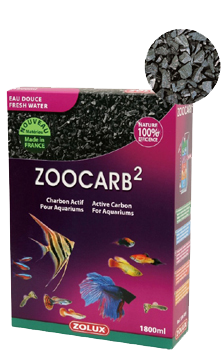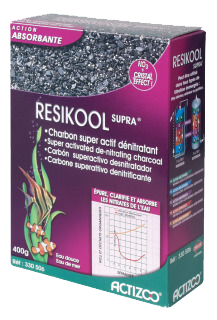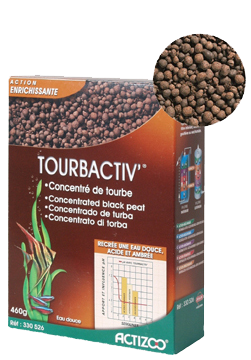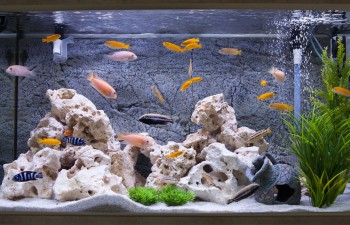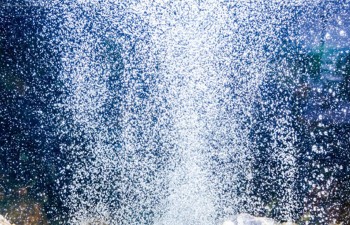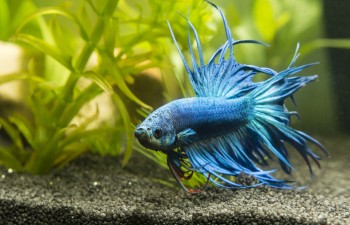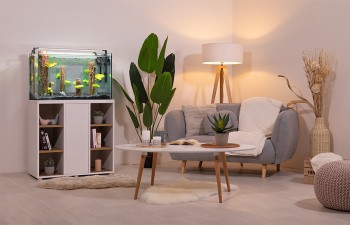
Aquarium filtration
Aquarium Filters and Filtration
The filter is an accessory used to clean and regenerate aquarium water, to keep it healthy, balanced, perfectly clear and odourless.
Filtration can be “internal” or “external” to the aquarium, and can be based on biological, mechanical, chemical action on the water, and often all three at once.
There are several types of filters on the market, all different from each other. The filter used must be suited to the type of aquarium, its volume and how willing the aquarist is to use more advanced solutions to achieve a balanced tank.
However all filters have the same basic principles: “Mechanical filtration” (to remove impurities), “Organic filtration” (to regenerate the organic particulate matter), and “Chemical filtration” (to absorb harmful residues and pollutants).
Main Types of Filters
Internal Filter
Box Filter
Product
Also called a biological filter and often pre-mounted as an integral part of the aquarium, the box filter is the most common filter type on the market for aquariums that are sold fully equipped. Compact, easy to maintain and effective, it usually consists of a rectangular box with 3 compartments (suction and heating, filter medium, discharge pump), and is usually attached to the side of the aquarium.
External Filter
Long considered the King of filters, external filters have in recent years lost some ground to some types of box filter, as external systems do have some drawbacks: set up is a bit more technical with suction and discharge tubes going outside the tank, manual start-up is a bit trickier, and a more substantial budget is required. Because they are powerful, convenient and have a high retention capacity, external filters are still a major player in tanks over 120 L.
Undergravel Filter
The predecessor of biological filtration, this simple and effective filter is composed of a perforated plastic plate at the bottom of the tank, under the sand, and an uplift tube with an air diffuser to create a vertical suction (exhauster).
So the entire substrate in contact the plate serves as the filter medium (filtration is “mechanical” by the passage of water through the sand and “biological” due to the development of good bacteria and the resulting biotransformation).
Gutter Filter
A gutter-shaped filtration system located in the upper part of the aquarium. The pump is submerged in the aquarium and pumps water up to the gutter filter which works by gravity (an old but quite effective filtration system, less common now than it used to be).
Trickle Filter
Also called “semi-wet” or “wet/dry”, this filtration is used in freshwater and saltwater tanks, mainly in large, technically-sophisticated aquariums. Composed of an additional tank, usually located under the aquarium, a trickle filter is an external “overflow” system. A portion of the filtration media may be positioned in the open air (drawer system) which then receives the water to be filtered as “rain” which trickles down onto it. This technique provides maximum air/water exchange, thus generating a very high rate of oxygen saturation in the filter media (particularly favourable conditions for the development of denitrifying bacteria).
The large volume of this additional filter tank also allows for the convenient placement of, and easy access to, many different accessories, such as a skimmer, calcium reactor, heater, cooling, electronic control panel, and a large reserve of water required for the ongoing “overflow” of the tank.
Natural plant filtration
A “green” and remarkably effective system, typically used on specific tanks called “open” tanks. The principle is to purify the aquarium using non-aquatic plants, only the roots of which extend into the rear part of the aquarium. The plants put down their roots and feed on and absorb all the harmful substances from the biological and chemical processes of the aquarium (nitrites, ammonia, nitrates, phosphates, etc.).
It should be noted that this type of very specific tank and the lush vegetation it produces require special monitoring, and a drip-feed system or frequent topping-off of the supply of water to make up for the continuous evaporation of an “open tank” system.
The Principle and Composition of Filter Media
An aquarium filter is composed of media or substrates for filtration intended to perform many different and complementary actions on the water – “mechanical”, “chemical”, “biological”, and “enriching” actions; this is what clarifies, stabilizes and balances the aquarium.
Objectives of filtration: to draw particles and organic waste generated by the fauna and flora of the tank and retain them (the physical action of the medium), then to “digest” and transform the waste into non-toxic compounds through bacterial (biological) action, finally purifying and neutralizing or adsorbing the toxic residues, colorants or odorants remaining in the tank (chemical action).
ZOLUX Tips:
When starting a new aquarium or renovating an old one, always seed your filter using an enzymatic and bacterial strain (available from your aquarium specialist).
- It takes some time to start up an aquarium before the filter is fully functional. It is important to wait a few days after installation before adding fish (time for the biological life cycle to get started).
- Filter maintenance should be done on a monthly basis. In order not to disrupt the existing balance, be careful not to disrupt the environment with interventions that are too frequent or too extreme. For example, be sure not to clean all the filter elements at the same time; instead, clean each filtration stage separately, spreading the cleaning out over time.
- To monitor the balance of your aquarium, check the properties of your water (or plan to have them checked) regularly. Simple and practical tests are available from your aquarium specialist that will help you manage and track the changes in these properties yourself (the most important include nitrites, nitrates, pH, GH, KH).
Various Filtration Substrates – The ZOLUX® Range
Mechanical Action
PERLON WOOL
Perlon wool with a very fine structure is perfect for micro-mechanical filtration of aquarium water (fine screen).
PERLON WOOL is essentially a purely mechanical filtration medium (needs to be changed regularly). Neutral, widely available, practical and economical, this filter medium can be used alone, or in addition to any other filter media.
Notice - You must rinse perlon wool with hot water before first use. FRESHWATER/SALTWATER
PRE-FILTER
For mechanical pre-filtration of impurities when there is a chance of clogging.
More loosely structured Perlon is good for selective mechanical pre-filtration of waste. Placed upstream, this initial filtering of larger debris helps avoid the risk frequent filter clogging. The Perlon fiber must be rinsed in hot water before the first use and then placed in the filter sequence upstream of all the mechanical filtration media with a finer structure.
FRESHWATER/SALTWATER
DUO MOUSS'®
DUO-MOUSS' is a kit of two types of filter wool with different structures and screens, specially designed for mechanical and biological filtration in the aquarium. - 1 piece of wool with a large structure (10 ppi) for mechanical pre-filtration of large waste (clean frequently) - 1 piece of wool with a finer structure (30 ppi) for finer mechanical filtration combined with biological filtration. Comes in standard sizes and with easy trimming fits all shapes and types of filter.
FRESHWATER/SALTWATER 3 sizes available + Pro version (50 x 50 cm sheets for trimming)
Biological Action
CERACTIV'® : CERAMIC PRE-FILTER
Small porous ceramic macaroni pieces have long been used in biological water filtration. Water cascading over and through the porous structure of these ceramic pieces results in a remarkable bacterial colonization of the substrate. So CERACTIV'® provides a combination of selective and non-clogging mechanical pre-filtration and effective biological filtration. FRESHWATER/SALTWATER
Purifying Action
ZEOCLEAR® : ZÉOLITHE (ANTI-TOXIC PURIFIER)
Zeoclear® is a natural zeolite clinoptinolite-type product. A true chemical decontaminant, Zeoclear® uses ionic adsorption to eliminate toxic and undesirable substances such as ammonia, ammonium, sulphates, sulphides, heavy metals, pesticides, unpleasant gases and odours, etc. (an essential addition to any aquarium filtration system). Compatible with all additional filtration media. FRESHWATER/SALTWATER
RESI-FILT' CLEANWATER ®
A new generation of filtration composite, developed from decontaminating resins (which absorb toxic substances), enhanced with anti-phosphate resins and anti-algae silicates. The huge purification capacity of RESI-FILT' CLEANWATER® effectively reduces harmful substances such as nitrates, phosphates, silicates, ammonia, and nitrites, and over the long-term eradicates the majority of parasitic algae in the aquarium. RESI-FILT' CLEANWATER®: an essential product for the serious aquarist, it is compatible with all additional aquarium filtration media. FRESHWATER/SALTWATER
Absorbing Action
ZOOCARB2®: CHARCOAL FILTRATION - WATER DECONTAMINATION
ZOOCARB® is a plant-based charcoal product for freshwater aquarium filtration systems. A true water decontaminant, its internal structure is made up of countless micropores which work to adsorb and trap harmful elements such as chlorine, odours, dyes, etc., and certain pollutants that result from the processing of organic materials in the aquarium.
ACTIKOOL2
Crushed activated carbon for aquarium filtration.
Super-absorbent and guaranteed phosphate- and copper-free, the manufacturing and carbonization process used results in a highly microporous product, making it one of the most effective carbon filtration products available: 1 cm3 = 1000 m2 of effective surface area. It removes toxic substances such as chlorine and pesticides, and adsorbs pollutants (drug residue, odours, colours, etc.) and, it results in perfectly crystal-clear water.
RESIKOOL SUPRA®
A combination of hyper-activated carbon and nitrate-eliminating resins. In addition to its exceptional absorbency which removes contaminants from water (chlorine, pesticides, odours, colours, etc.), RESIKOOL® Supra allows for effective and efficient adsorption of nitrates (undesirable substances that become noxious as they accumulate, and promote the growth of parasitic algae in the aquarium).
RESIKOOL Supra® ensures crystal clear water.
Enrichment Action
TOURBACTIV®
Concentrated black peat granules, highly regarded for their enriching and anti-bacterial properties (natural supply of humic acid, plant hormones and trace elements). Frequently used to recreate an Amazonian blackwater habitat and for the reproduction of some acidophilic fish (Discus, Cardinals, Altum Angelfish, etc.). The action of humic acid on the environment will result in water that is more or less soft and acidic (pH), given that this chemical reaction is closely related to the mineral hardness of the environment (GH/KH).
CALCIFIX
A mineral substrate particularly rich in aragonite and designed to correct water with too few minerals or which tends to become acidic (pH ¯)
As its calcium and magnesium slowly dissolve, CALCIFIX® remineralizes water that is too soft and naturally raises the hardness (KH) and alkalin-ity (pH) to optimum values, so plants and fish can get the minerals and carbon required for harmoni-ous and balanced development. CALCIFIX® is also recommended for most African cichlids and can be used in freshwater as well as saltwater.


